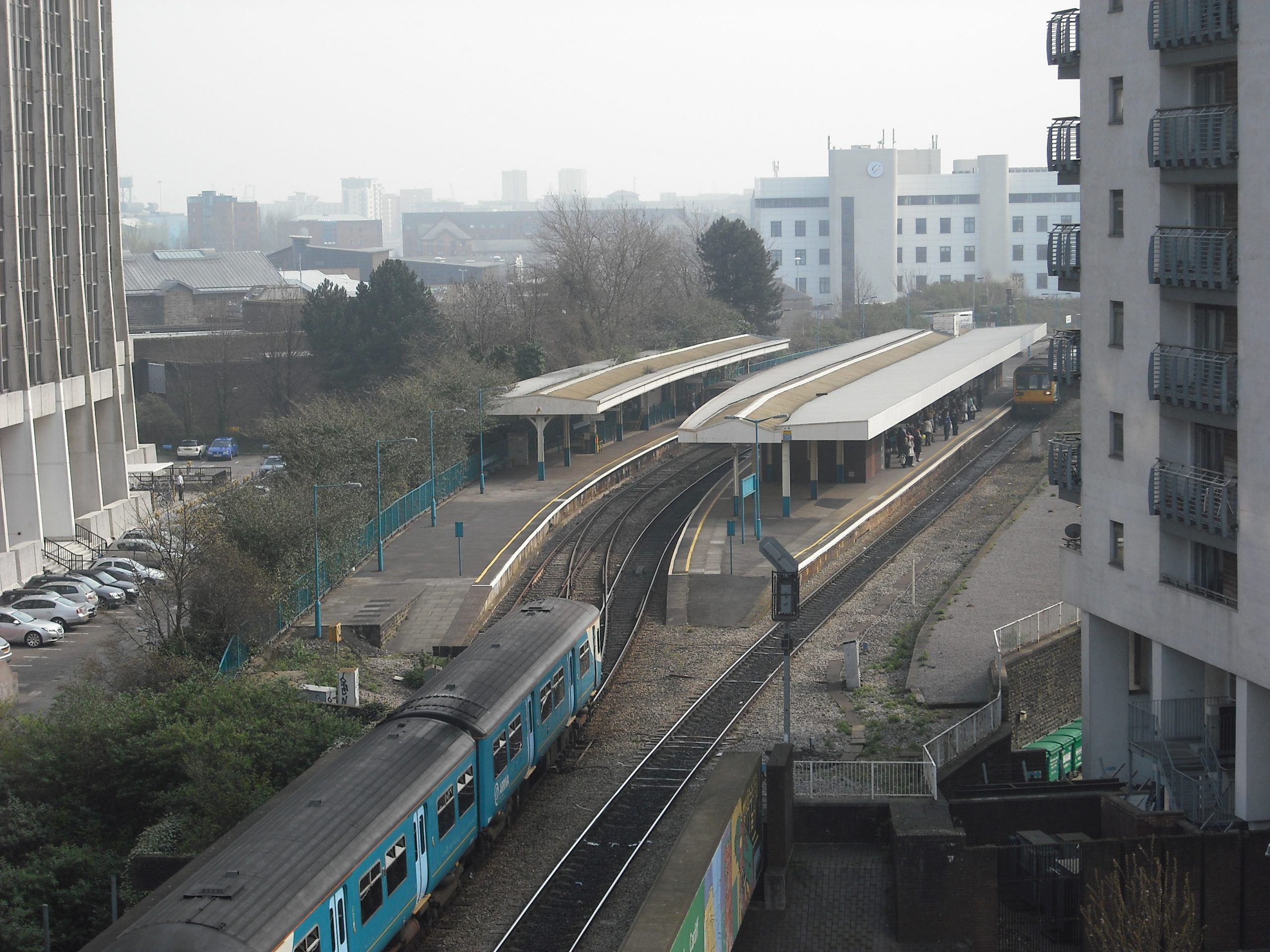Cardiff Queen Street railway station is Wales’ second busiest railway station in Cardiff, Wales. It is one of 20 stations in the city and two in the city centre, the other being Cardiff Central.
It is the main hub of the Valley Lines network – a railway system serving Cardiff, the Vale of Glamorgan, Bridgend and the South Wales Valleys – and has the solitary connection to Cardiff Bay. The station is located at the eastern end of the city centre, near the Capitol Centre, and sees heavy volumes of commuter rail traffic during the rush hour.
The station has three utilised platforms at a level raised above the surrounding roads. Platform 1 is used for services to Aberdare, Merthyr Tydfil, Treherbert, Rhymney and Bargoed as well as Coryton in the east of Cardiff. Platform 2 is used for services towards Cardiff Central and beyond towards Penarth, Radyr via City Line, Barry Island and Bridgend via Rhoose Cardiff International Airport. Platform 3 is now only used for services to the Bay and is usually operated by Arriva Trains Wales’s single Class 121 ‘Bubble’ Car unit 121032. The fourth platform, currently not in use, may be reopened in the future to reduce the bottleneck in Valley Line services at Cardiff Central and Queen Street.
The old station car park is now dedicated for private use by residents of a nearby modern development of apartments known as “The Aspect”. The station is staffed at most times, with ticket purchase facilities, a newsagent in the forecourt and a café on platforms 1 and 2, where toilets are also found.
A station known as “Crockherbtown” on this site was built in 1840 by the Taff Vale Railway, whose headquarters were also located here. It was rebuilt and given its present name in 1887. Other major rebuildings took place in 1907 and by British Rail in 1973[3]. In 2005, the station was fitted with new ticket gates, operational when the station is manned, which allow easier access in both directions. In 2006 plasma TV screens replaced the old information display monitors.
Discover more from LandmarkLocation.com
Subscribe to get the latest posts sent to your email.


